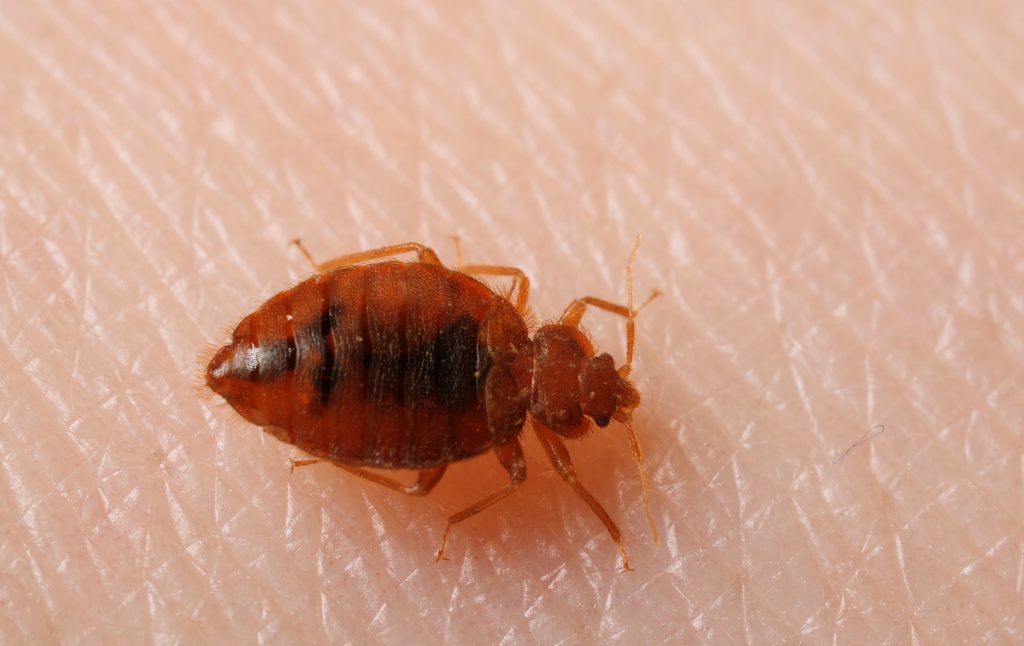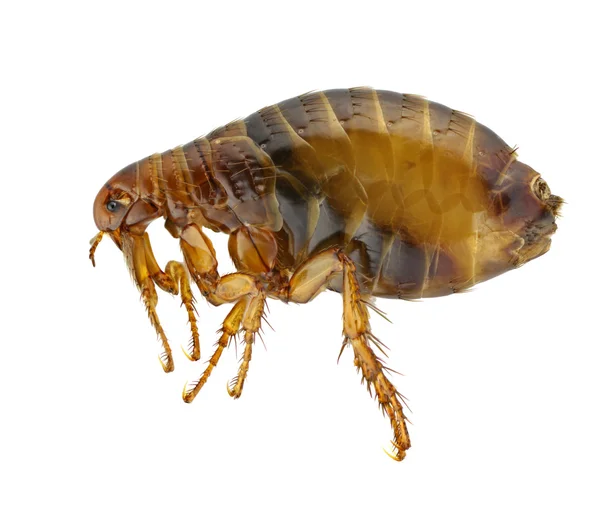Bed bugs
Bed bugs are small, flat, parasitic insects that feed solely on the blood of humans while they sleep. Their infestations occur around or near the areas where people sleep.
Bed bugs are not considerer as a public health hazard. They are not known to spread disease, but can cause annoyance due to itching and loss of sleep. Sometimes itching can lead to excessive scratching and a chance of secondary skin infection.

Diagnosis for bed bugs
There are a few different way you may notice the presence of bed bugs:
- Small red and brown stains on sheets or mattress (crushed bed bugs)
- Dark spots the size of a punctuation mark period (bed bug excrement)
- Small pale yellow husks (eggshells and shed skins)
Treatments for bed bugs
The best way to get rid of bed bugs permanently is to work with a pest control professional to come up with a plan that combines home remedies and professional pesticide solutions.
Here are things you can do at home to help bed bugs stay away:
Wash and dry clothes and bedding in temperatures of at least 120 degrees
Heat is one of the best ways to kill bed bugs. Pest experts use professional heating elements to kill bedbugs. You can also use a steam cleaner with a diffuser to kill bed bugs hiding in fabrics and baseboards.
Vacuum frequently – at least a few times per week
Vacuuming can suck up bed bugs but it doesn’t kill them. Make sure to seal the vacuum bag or trash bag with tape and immediately throw out in the garbage outside of your house.
Freeze items you can not heat or launder
Heat kills bed bugs and so does prolonged exposure to cold temperatures of zero degrees Fahrenheit. You can freeze items like electronics that do not have LCD screens, pictures, books, shoes, and toys. Place the items in a sealed plastic bag prior to freezing and make sure to freeze items for at least four days straight.
Keep checking
In order to keep bed bugs at bay, you need to be vigilant. Keep checking to see if your efforts have worked. If any bed bug eggs are present after treatment, they can come back, so vigilance is key.
Fleas
Fleas are small, wingless, external parasites from the order Siphonaptera. Adult fleas range from 2 to 4 mm in length, are brown in colour and oval in shape.

Main flea species in Australia are:
- Cat flea, which is the most common flea in Australia. It attacks dogs, rats, humans and other mammals.
- Dog flea, which is less common than the cat flea, but similar in appearance. This flea attacks a wide variety of mammals.
- Human flea, which is uncommon due to the increase in home hygiene standards. This flea also attacks dogs, pigs, rats and mice.
Effective flea control often relies on the well-directed application of pesticides. Surface sprays can use to treat areas that may harbour eggs, larvae, pupae or adults. Typically, these areas may include flooring, skirting boards under rugs, and floor to wall joints. Particular care must be take in the accuracy of the application, especially when using products that are not suitable for carpets and upholstery.
Space spraying with pesticides can be a useful control method. The PCO must prevent entry to treated areas during the time of application.
Dusting – while not common – can be an effective application method when treating areas where spraying is difficult, such as in cracks and crevices, or wall voids. Take care when using dusts.
